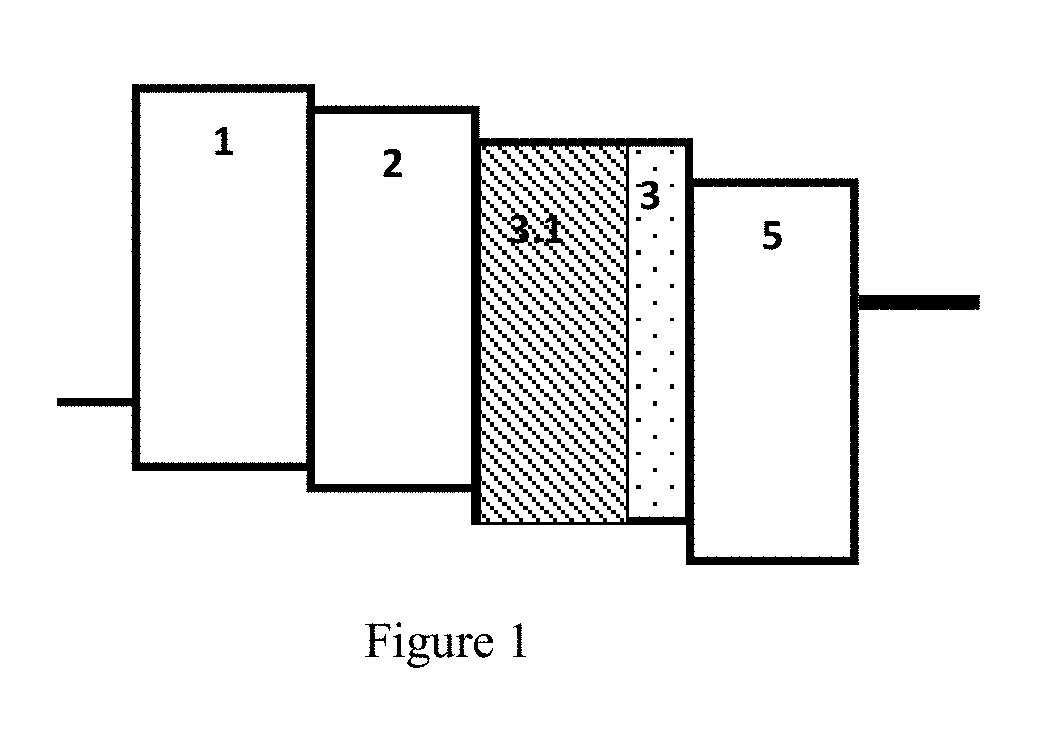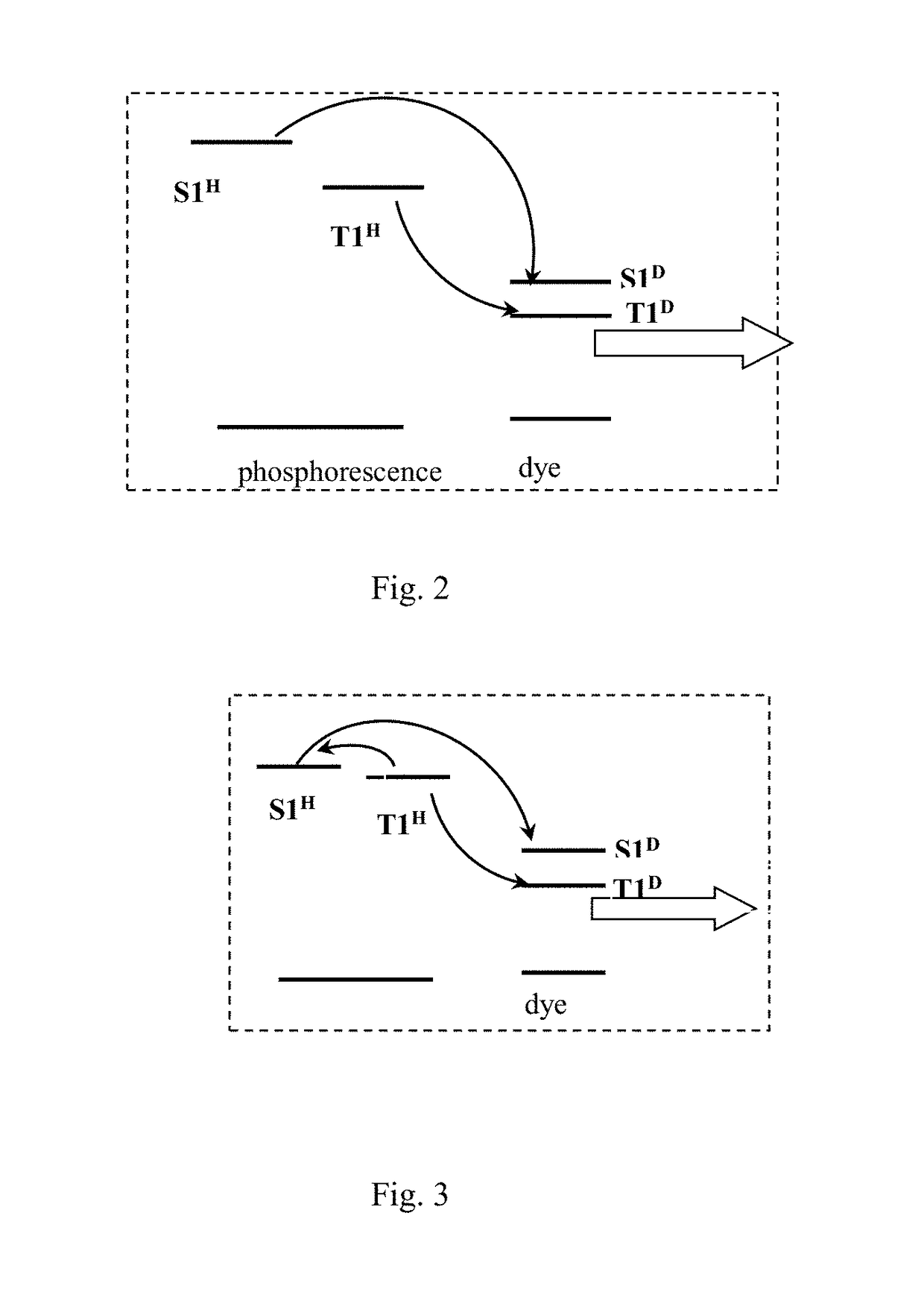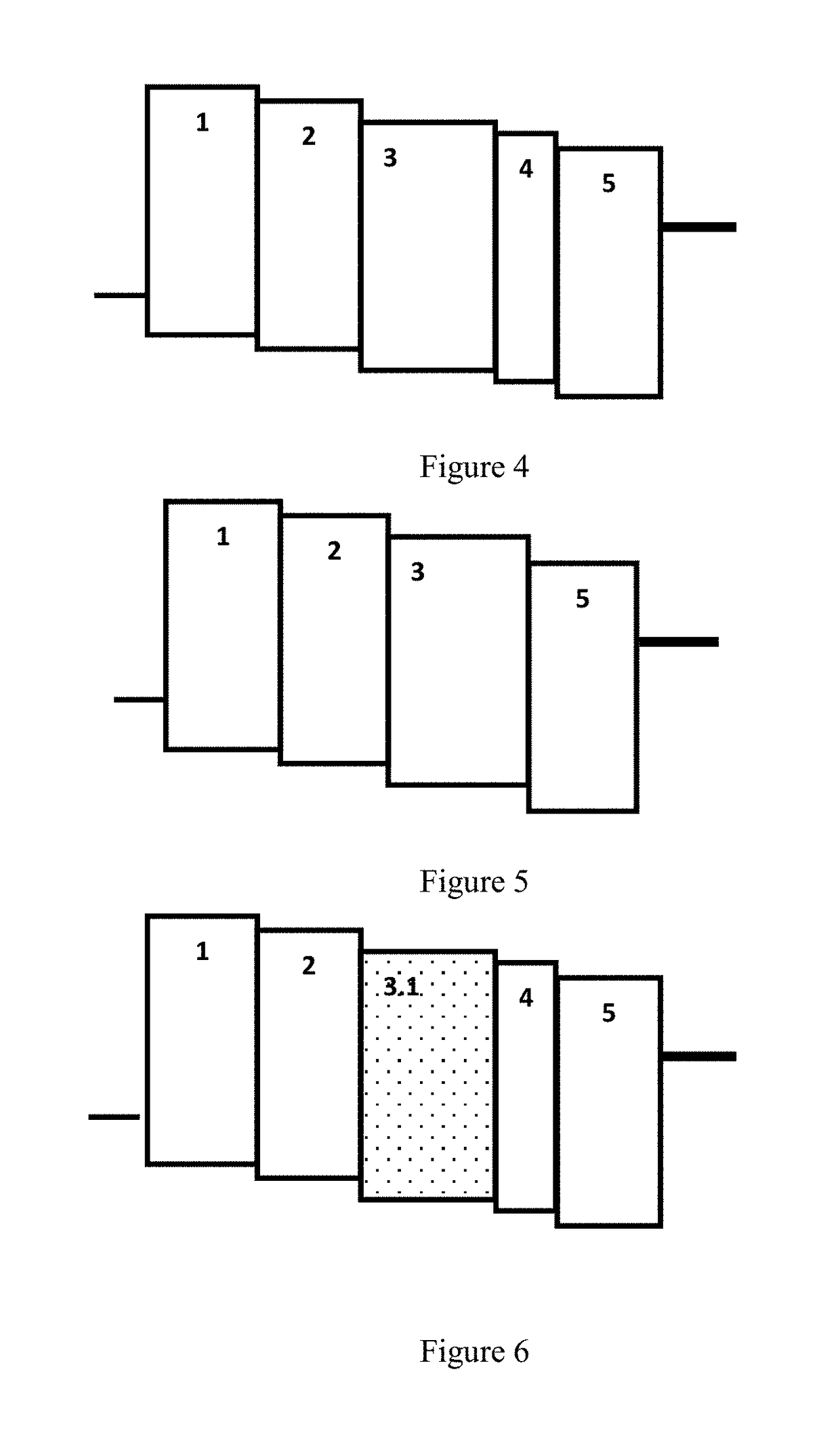Organic electroluminescent device
- Summary
- Abstract
- Description
- Claims
- Application Information
AI Technical Summary
Benefits of technology
Problems solved by technology
Method used
Image
Examples
example 1
[0138]The structure of the OLED device of this Example is as shown in FIG. 1, and comprises: an anode, a hole injection layer 1, a hole transport layer 2, a luminescent layer 3, a barrier layer 4, an electron transport layer 5 and a cathode (not shown in the figure) that are successively laminated and deposited on a substrate (not shown in the figure).
[0139]In this Comparative Example, ITO serves as the anode; MTDATA:4% F4TCNQ serves as the hole injection layer 1; TCTA serves as the hole transport layer 2; the luminescent layer 3 employs the host (2-13) as the phosphorescence host material, and the green phosphorescence material Ir(ppy)3 serves as the green phosphorescence dye (the doping mass percentage of the dye in the luminescent layer is 1%); MTDATA doped Li3N serves as the electron transport layer 5; and Al serves as the cathode.
[0140]ITO / MTDATA:4% F4TCNQ(100 nm) / TCTA(20 nm) / host(2-13):1% Ir(ppy)3(30 nm) / Alq3:2% Li3N(25 nm) / Al(100 nm)
example 2
[0141]The structure of the OLED device of this Example is as shown in FIG. 1, and comprises: an anode, a hole injection layer 1, a hole transport layer 2, a luminescent layer 3, a barrier layer 4, an electron transport layer 5 and a cathode (not shown in the figure) that are successively laminated and deposited on a substrate (not shown in the figure).
[0142]In this Comparative Example, ITO serves as the anode; MTDATA:4% F4TCNQ serves as the hole injection layer 1; TCTA serves as the hole transport layer 2; the luminescent layer 3 employs the host (2-13) as the phosphorescence host material, and the green phosphorescence material Ir(ppy)3 serves as the green phosphorescence dye (the doping mass percentage of the dye in the luminescent layer is 5%); MTDATA doped Li3N serves as the electron transport layer 5; and Al serves as the cathode.
[0143]ITO / MTDATA:4% F4TCNQ(100 nm) / TCTA(20 nm) / host(2-13):5% Ir(ppy)3(30 nm) / Alq3:2% Li3N(25 nm) / Al(100 nm)
example 3
[0144]The structure of the OLED device of this Example is as shown in FIG. 1, and comprises: an anode, a hole injection layer 1, a hole transport layer 2, a luminescent layer 3, a barrier layer 4, an electron transport layer 5 and a cathode (not shown in the figure) that are successively laminated and deposited on a substrate (not shown in the figure).
[0145]In this Comparative Example, ITO serves as the anode; MTDATA:4% F4TCNQ serves as the hole injection layer 1; TCTA serves as the hole transport layer 2; the luminescent layer 3 employs the host (2-13) as the phosphorescence host material, and the green phosphorescence material Ir(ppy)3 serves as the green phosphorescence dye (the doping mass percentage of the dye in the luminescent layer is 10%); MTDATA doped Li3N serves as the electron transport layer 5; and Al serves as the cathode.
[0146]ITO / MTDATA:4% F4TCNQ(100 nm) / TCTA(20 nm) / host(2-13):10% Ir(ppy)3(3 On m) / Alq3:2% Li3N(25 nm) / Al(100 nm)
PUM
 Login to View More
Login to View More Abstract
Description
Claims
Application Information
 Login to View More
Login to View More - R&D
- Intellectual Property
- Life Sciences
- Materials
- Tech Scout
- Unparalleled Data Quality
- Higher Quality Content
- 60% Fewer Hallucinations
Browse by: Latest US Patents, China's latest patents, Technical Efficacy Thesaurus, Application Domain, Technology Topic, Popular Technical Reports.
© 2025 PatSnap. All rights reserved.Legal|Privacy policy|Modern Slavery Act Transparency Statement|Sitemap|About US| Contact US: help@patsnap.com



